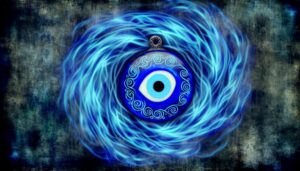What is the Meaning of a Feather Symbol in Different Cultures?
Feathers symbolize spirituality, freedom, and divine communication across various cultures. In Native American traditions, they represent spiritual ascension, honor, and connection to the Great Spirit, with each feather type offering unique meanings.
The ancient Egyptians revered the feather of Ma'at as a symbol of truth and cosmic balance, essential in the judgment of the dead. Feathers also serve as conduits for spiritual messages, promoting personal transformation and connection to ancestors.
Dream interpretations often link feathers with aspirations and moral integrity, reflecting deep cultural significance. Explore further to understand the intricate layers of feather symbolism.
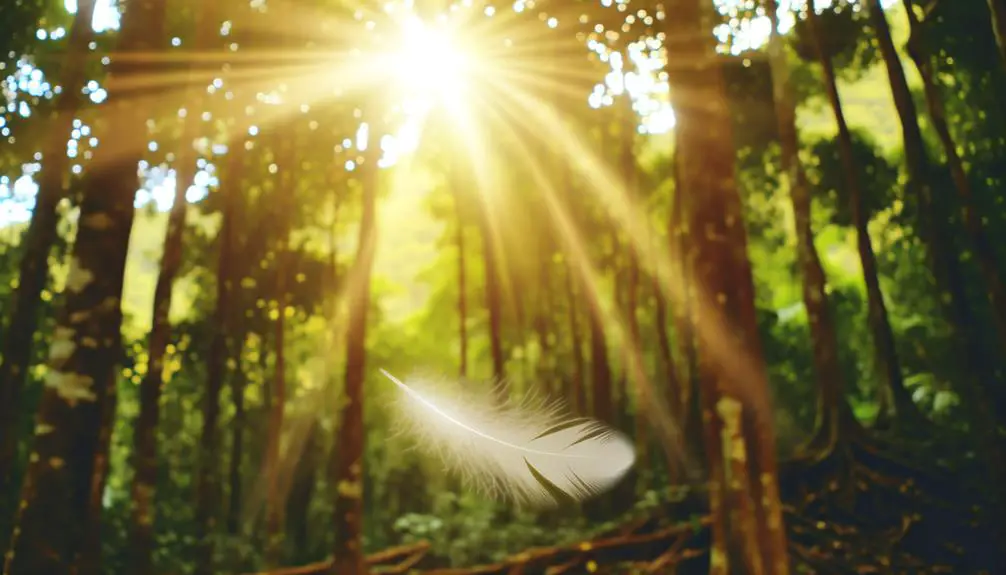
Key Takeaways
- Feathers symbolize spiritual growth, freedom, and the connection to the divine across many cultures.
- Native American traditions view feathers as symbols of honor, spiritual ascension, and communication with the Great Spirit.
- Ancient Egyptians associated feathers, particularly Ma'at's feather, with truth, balance, and the cosmic order.
- Feathers in dreams often represent spiritual messages, aspirations, and personal transformation.
- In modern contexts, feathers symbolize guidance, liberty, elegance, and connection to nature, often used in rituals, fashion, and tattoos.
Historical Significance
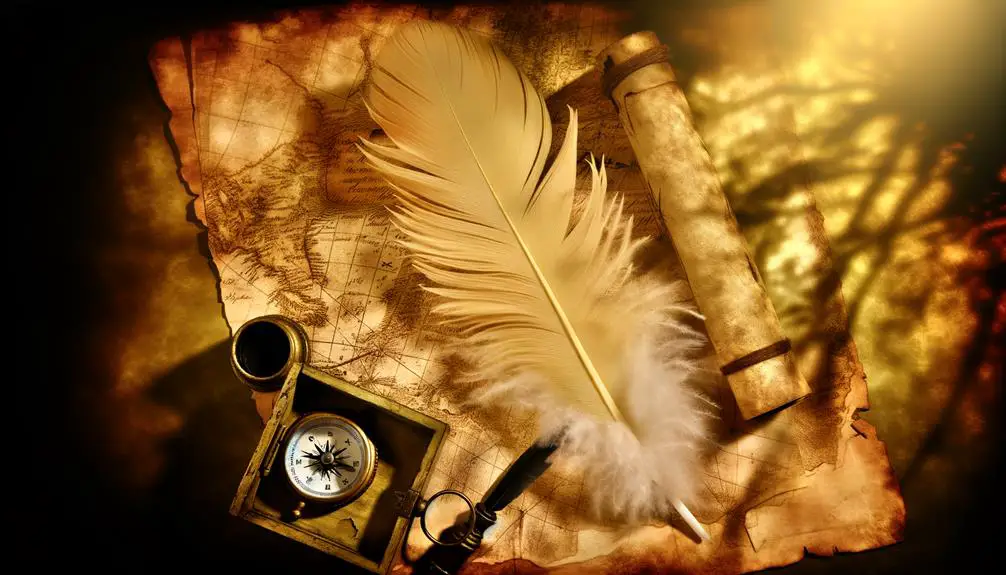
Throughout various cultures and time periods, the feather symbol has held profound historical significance, often representing concepts such as spirituality, freedom, and communication with the divine.
Archaeological findings reveal feathers in ancient burial sites, suggesting their role in rituals and beliefs about the afterlife.
In Egyptian culture, the feather of Ma'at symbolized truth and justice, used in the weighing of the heart ceremony.
Native American traditions often associate feathers with the Great Spirit, embodying a connection to higher dimensions.
Medieval European heraldry also featured feathers, signifying achievements and noble virtues.
Each instance underscores how feathers transcend mere physicality, embedding themselves into the spiritual and cultural fabrics of societies, offering rich insights into historical values and worldviews.
Cultural Interpretations
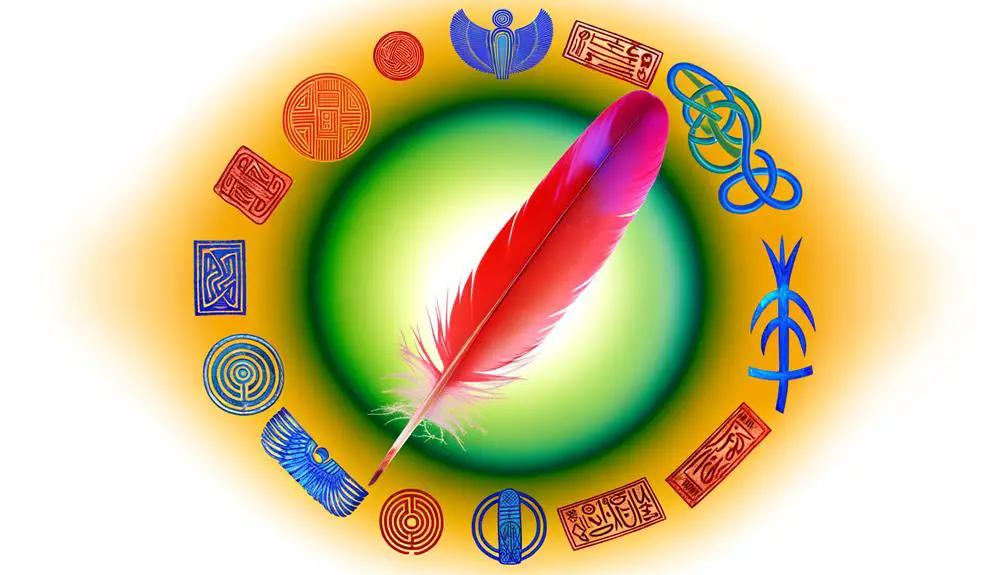
Cultural interpretations of the feather symbol are rich and varied, encompassing Native American symbolism where feathers often signify connection to the spiritual domain.
In ancient Egyptian beliefs, feathers were associated with the goddess Ma'at and the principles of truth and justice.
In contemporary contexts, feathers frequently represent spiritual growth and freedom.
Analyzing these perspectives provides a nuanced understanding of how feathers transcend time and culture to embody profound meanings.
Native American Symbolism
In Native American cultures, the feather symbol holds multifaceted significance, often representing attributes such as spiritual ascension, honor, and the connection between the earthly and the divine.
Feathers are frequently used in ceremonial attire and sacred objects, symbolizing the presence and blessings of the Great Spirit. Different tribes attribute varied meanings to specific types of feathers; for instance, eagle feathers are particularly revered, symbolizing courage, strength, and leadership.
Ethnographic insights reveal that feathers are also believed to carry prayers to the heavens, serving as conduits for communication with ancestral spirits. The intricate use of feathers in rituals and everyday life underscores their profound cultural and spiritual reverence, encapsulating a rich tapestry of beliefs and practices.
Ancient Egyptian Beliefs
Ancient Egyptian beliefs imbued the feather with profound symbolic significance, most conspicuously epitomized by the feather of Ma'at, the goddess of truth, balance, and cosmic order. This feather played a pivotal role in the ancient Egyptian judgment of the dead, where the heart of the deceased was weighed against Ma'at's feather. A heart lighter than the feather indicated a life of righteousness, granting passage to the afterlife. Here, the feather transcends mere physicality, embodying ethereal principles of morality.
| Symbol | Deity | Significance |
|---|---|---|
| Feather | Ma'at | Truth |
| Ankh | Anubis | Life |
| Scarab | Khepri | Rebirth |
| Eye | Horus | Protection |
| Crook | Osiris | Kingship |
Examining these symbols reveals the feather's integral role in delineating ethical and spiritual ideals.
Modern Spiritual Significance
Extending beyond the confines of ancient Egypt, the feather continues to be a potent symbol in contemporary spiritual practices worldwide, often representing concepts such as freedom, ascension, and communication with the divine.
In various New Age and spiritualist communities, feathers are believed to be messages from higher planes, offering guidance and reassurance.
Ethnographic studies reveal that individuals across different cultures associate feathers with personal growth and enlightenment, viewing them as signs of spiritual progress.
Within Native American traditions, feathers are revered in rituals and ceremonies, symbolizing a deep connection with nature and the spiritual world.
This enduring symbolism underscores the feather's role as a bridge between the earthly and the transcendent, illustrating its universal spiritual resonance.
Spiritual Symbolism
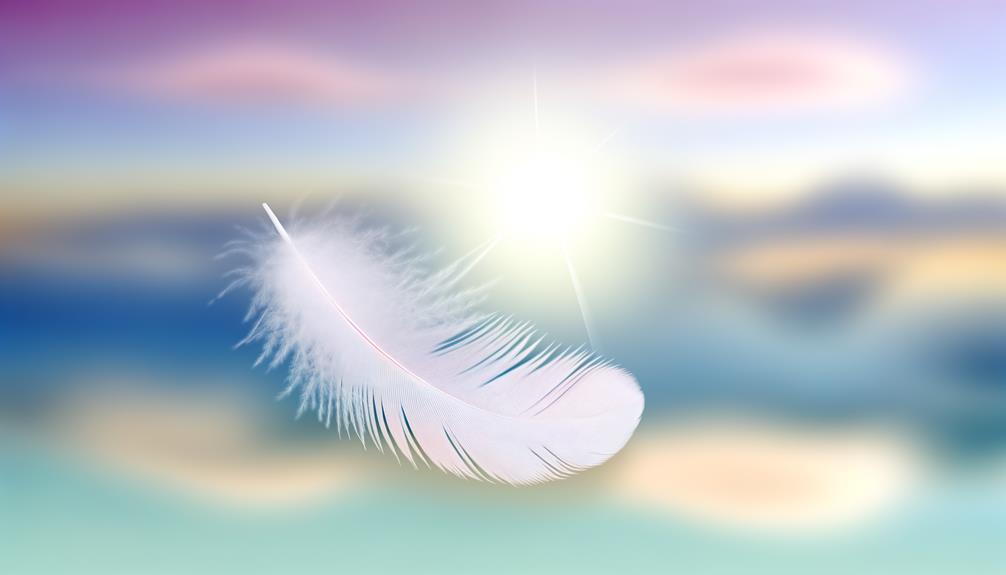
In the domain of spiritual symbolism, feathers frequently represent a profound connection with nature. They are often considered as conduits for messages from spirits.
Ethnographic studies reveal that many indigenous cultures interpret feathers as signs of personal transformation and growth. This symbolism underscores the feather's role as a bridge between the physical and spiritual worlds, facilitating both communication and metamorphosis.
Connection With Nature
Feathers, often perceived as delicate and ethereal, serve as powerful symbols of humanity's deep-seated connection to the natural world, embodying spiritual messages that have been revered across various cultures and epochs.
In Native American traditions, feathers are sacred emblems, representing the essence of birds and their free-spirited flight. Ethnographic studies reveal that feathers are used in rituals to invoke nature's wisdom and communicate with the spiritual domain.
In Celtic culture, feathers signify transcendence and the harmony between humans and nature. The feather's lightness and ability to travel on the wind symbolize the human soul's innate desire to explore and connect with the earth.
Therefore, feathers encapsulate a profound ecological and spiritual bond, transcending temporal and cultural boundaries.
Messages From Spirits
Across diverse cultures, feathers are often regarded as tangible conduits for spiritual messages, believed to carry the whispers of the divine and the ancestral domains.
In Native American traditions, finding a feather is interpreted as a sign from ancestors, indicating guidance or protection.
Similarly, in Celtic beliefs, feathers are seen as omens from the spiritual domain, embodying messages of hope or warnings.
Ethnographic studies of shamanistic practices in Siberia reveal that feathers are used in rituals to communicate with spirits, serving as mediums for divine insight.
These cultural contexts underscore the feather's role as a powerful symbol, bridging the material and spiritual worlds, and highlight humanity's enduring quest to decode the enigmatic messages from the beyond.
Personal Transformation
Renowned for their spiritual symbolism, feathers frequently embody the concept of personal transformation, signifying a journey of growth and enlightenment within various cultural narratives.
In Native American traditions, feathers are emblematic of spiritual ascension and wisdom, marking significant life changes or rites of passage.
Similarly, in ancient Egyptian culture, the feather of Ma'at symbolized truth and the soul's purification through personal evolution.
Ethnographic studies reveal that these symbols often serve as tangible reminders of the potential for human metamorphosis.
By tracing the feather's symbolic journey across different societies, one can observe a shared understanding: personal transformation is an intrinsic part of the human experience, facilitated by introspection, resilience, and spiritual growth.
These insights underscore the universal resonance of the feather symbol.
Feather Colors and Meanings
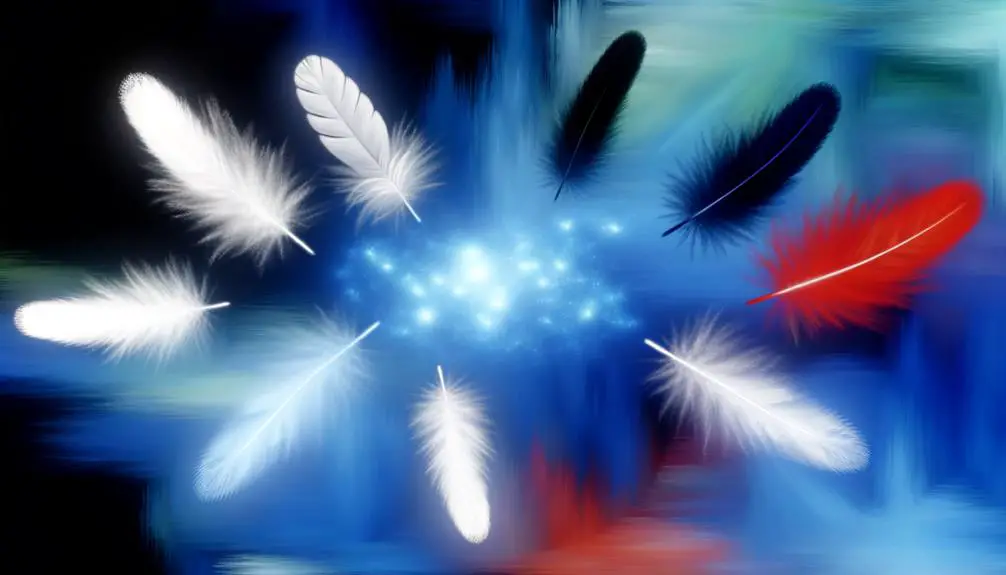
The diverse hues of feathers hold distinct cultural and spiritual significance, reflecting a rich tapestry of meanings across various traditions. White feathers often symbolize purity, peace, and protection, resonating with beliefs in angelic presence and spiritual guidance.
Black feathers, in contrast, are frequently associated with introspection, mystery, and the unseen domains, serving as a reminder of life's enigmatic aspects. Blue feathers are linked to communication, truth, and the expansive sky, often regarded as conduits for divine wisdom.
Red feathers represent energy, courage, and the life force, echoing their deep connection to the element of fire. Green feathers symbolize growth, healing, and the natural world, embodying the essence of renewal and harmony with nature. Each color infuses the feather with layered, context-specific meanings.
Feathers in Dreams
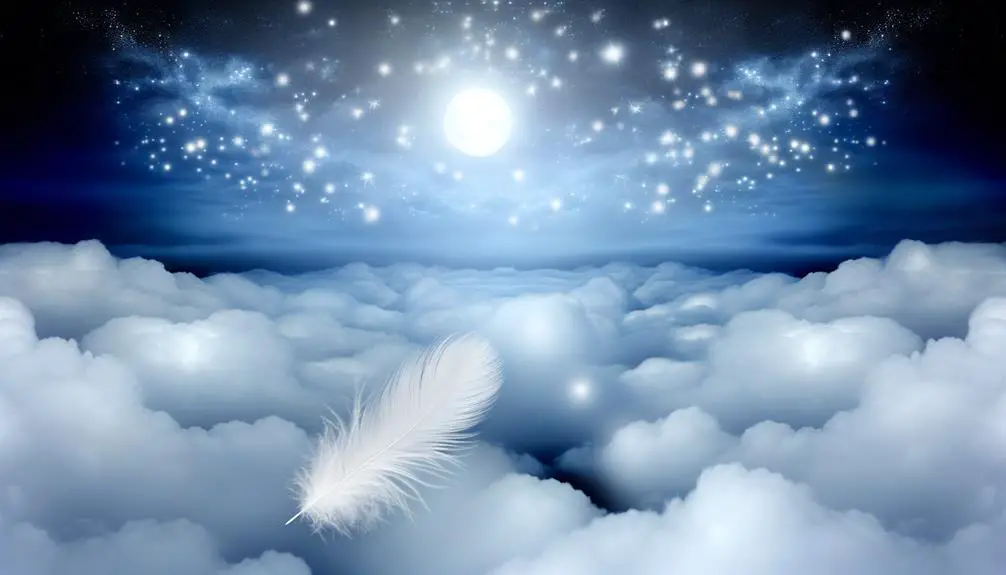
In various cultural and spiritual contexts, feathers appearing in dreams are often interpreted as powerful symbols of messages from the subconscious or the divine.
Ethnographic studies reveal that among Native American tribes, feathers in dreams signify spiritual ascension and communication with higher domains.
Similarly, in ancient Egyptian culture, dreaming of feathers was associated with the goddess Ma'at, symbolizing truth and moral integrity.
Psychoanalytical perspectives, influenced by Jungian theory, suggest that feathers in dreams represent an individual's aspirations and transformational journey.
These interpretations underscore a universal inclination to attribute a mystical significance to feathers, linking the waking and dreaming worlds.
Such symbols in dreams invite introspection, urging individuals to explore deeper spiritual and psychological dimensions.
Modern Uses and Beliefs

Contemporary interpretations and applications of feather symbolism encompass a broad spectrum of cultural practices and personal beliefs, reflecting both continuity and evolution in their significance. In modern contexts, feathers are often employed in various forms, each embodying distinct meanings and functions.
Spiritual Practices: Feathers are frequently integrated into spiritual rituals, symbolizing guidance from higher planes or ancestral spirits, a practice seen in New Age and indigenous traditions.
Fashion and Design: Feathers serve as aesthetic elements in fashion and interior design, representing freedom, elegance, and a connection to nature.
Tattoo Art: Feather tattoos are popular for their symbolic meanings, such as liberty, courage, and transcendence, often chosen to convey personal narratives or aspirations.
These modern uses underscore the dynamic and multifaceted nature of feather symbolism today.
Conclusion
In the grand tapestry of human belief, the feather—once a mere adornment of avian flight—has ascended to celestial domains of symbolic complexity.
From its historical and cultural gravitas to its spiritual and chromatic nuances, the feather commands a reverence that belies its humble origins.
Modernity, with all its rational enlightenment, still finds itself inexplicably tethered to this archaic token, showcasing that even in an age of reason, sentimentality triumphs over skepticism.




